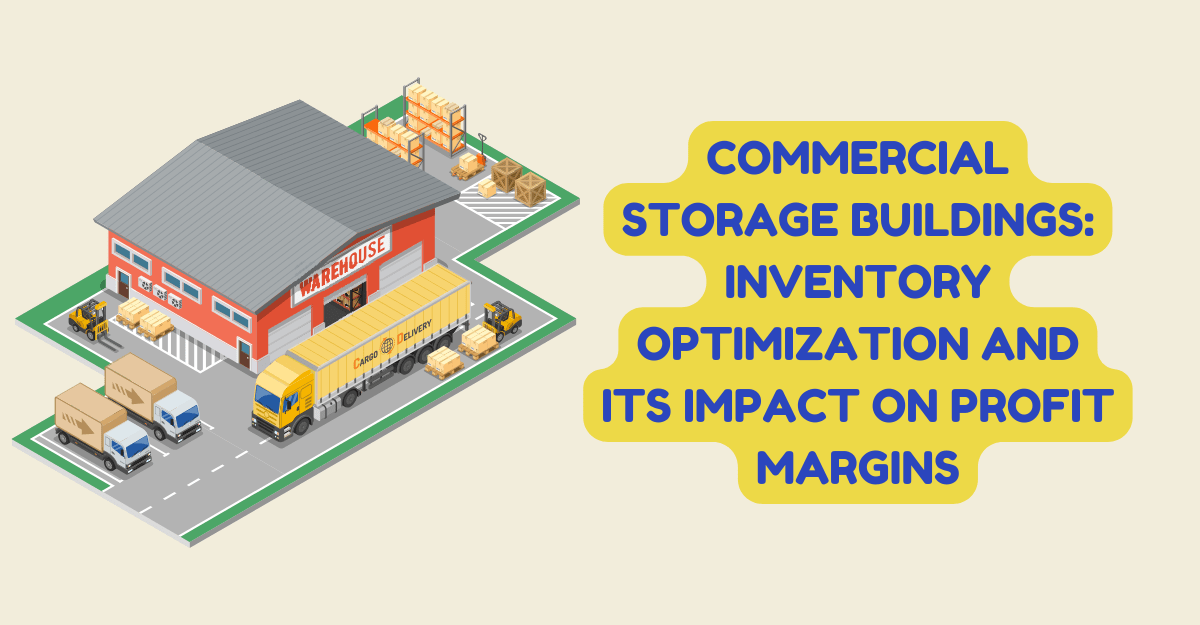
Achieving optimal inventory management is a strategic imperative in business logistics. One powerful tool that businesses use to enhance their inventory management practices is the utilization of commercial storage buildings. These purpose-built structures offer various benefits that directly impact profit margins. This article discusses how commercial buildings for storage contribute to inventory optimization and, ultimately, influence profit margins.
Maximizing Storage Capacity
At the heart of any efficient inventory management system lies the ability to maximize storage capacity. Commercial buildings are engineered with this principle in mind. Through careful design, these structures make the most of available space, often incorporating innovative shelving systems, racking solutions, and automated storage technology. This precision ensures that every square foot is utilized efficiently, reducing wasted space and increasing storage capacity.
Temperature and Climate Control
Temperature and climate control within commercial buildings are critical for preserving the integrity of various inventory items. Scientifically designed HVAC (Heating, Ventilation, and Air Conditioning) systems maintain consistent temperature and humidity levels. This controlled environment is essential for items such as pharmaceuticals, electronics, and perishable goods. Ensuring the proper conditions for storage minimizes product degradation and losses due to spoilage or damage.
Advanced Inventory Tracking Systems
Today’s commercial storage buildings are super high-tech. They use fancy systems like RFID (Radio-Frequency Identification) and IoT (Internet of Things) sensors to keep track of everything inside. These systems give real-time information about how much stuff is there, where it’s located, and even when it might expire. All this data is processed using smart computer programs, which help businesses figure out how much of their products they need to have on hand and when to order more.
Enhanced Accessibility and Retrieval Systems
Efficient access to stored inventory is crucial for businesses to meet customer demands promptly. Commercial buildings often incorporate advanced retrieval systems, such as automated conveyor belts, robotic pickers, and vertical lifts. These technological marvels minimize human error, reduce retrieval times, and improve overall operational efficiency.
Inventory Rotation Optimization
Scientifically, proper inventory rotation is vital for reducing waste and ensuring that older items are used or sold before newer ones. Commercial storage buildings often employ automated systems that facilitate first-in, first-out (FIFO) or last-in, first-out (LIFO) inventory rotation strategies. This precision in inventory handling reduces the risk of product obsolescence and helps maximize the shelf life of perishable goods.
Cost Reduction Through Economies of Scale
Commercial buildings offer businesses the advantage of economies of scale. By consolidating storage operations into a single, well-designed facility, businesses can reduce operating costs associated with multiple smaller storage locations. These cost savings directly impact profit margins by minimizing overhead expenses.
Improved Order Fulfillment
Efficient order fulfillment is directly linked to customer satisfaction and, consequently, business profitability. The technical capabilities of commercial buildings, including automated picking and packing systems, result in faster and more accurate order processing. This, in turn, enhances customer loyalty and drives higher sales revenues.
Data-Driven Decision-Making
In today’s data-centric business environment, commercial buildings contribute to data-driven decision-making. The wealth of information collected through inventory tracking systems enables businesses to make informed choices about product procurement, pricing, and demand forecasting. This strategic advantage can significantly impact profit margins by reducing excess inventory and minimizing carrying costs.
To sum it up, commercial storage buildings are really important for making sure businesses can manage their products efficiently. They do this by using advanced technology and smart planning to make the most of the space, control the environment, and keep a close eye on the inventory. This helps businesses manage their stock better.